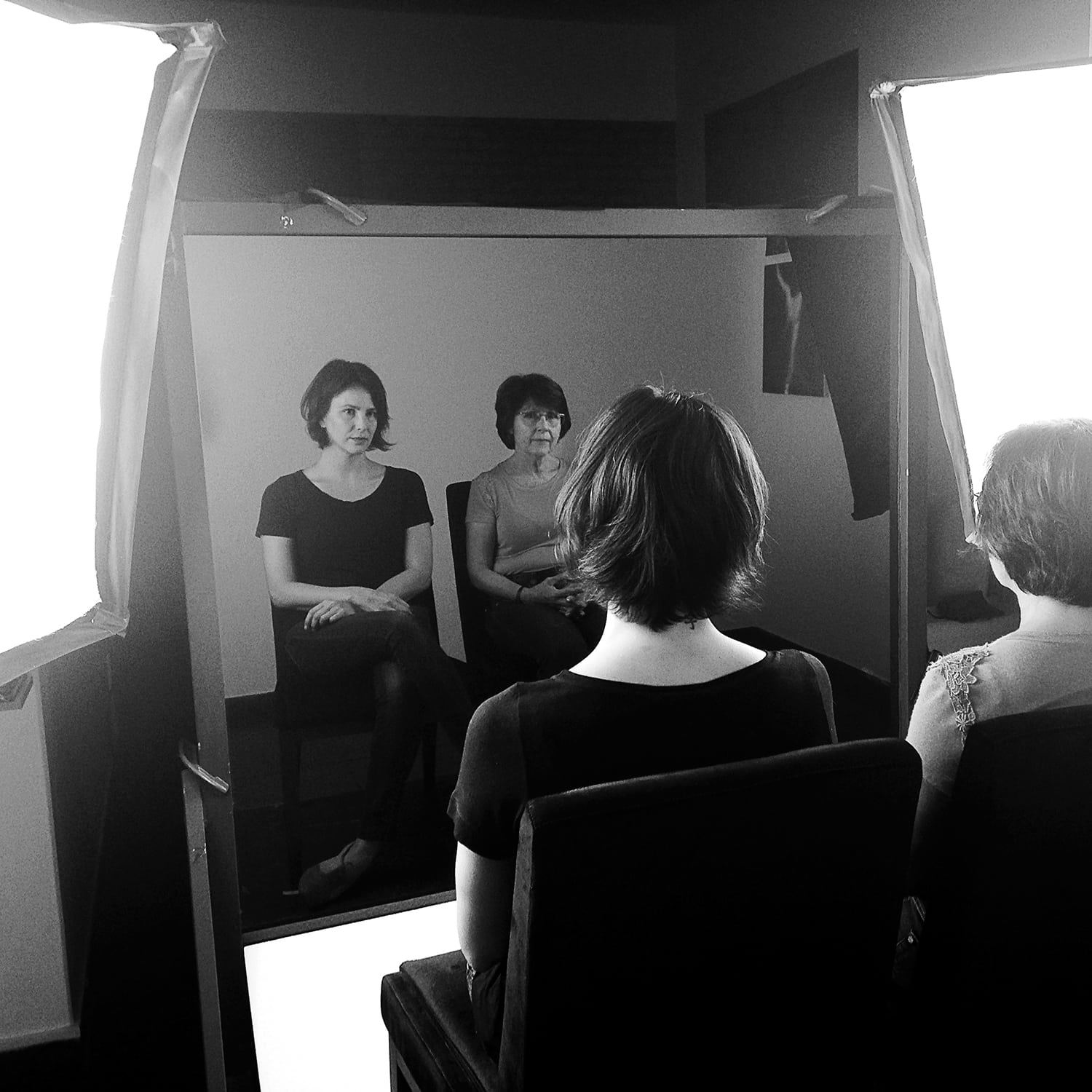
A mother and daughter look at themselves together in the mirror.
In her “Devastación” project, Brazilian photographer Paula Huven explores the complex relationship between mothers and daughters. For 15 minutes, they sit in silence, looking at each other in front of a two-way mirror through which they are photographed. Inspired by Lacanian psychoanalysis, this series of tandem portraits alters the traditional relationship between the photographer and the subjects to create a shared creation from the images obtained.
By Alonso Almenara
For Brazilian photographer Paula Huven, the desire to photograph emerged as a family matter. Born in Belo Horizonte, she began her journey in this discipline while pursuing a degree in Communication, with her initial documentary work aimed at capturing her grandmother’s daily life. Shortly after, she moved to Rio de Janeiro and was hired as a photojournalist by Folha de São Paulo newspaper. However, this did not deter her from working on personal photography projects in which she developed her interest in femininity and filial bonds. In 2014, this quest led her back to her hometown to embark on a two-month project, where she invited a group of mothers and daughters for a photoshoot. Huven was interested in exploring through photography what she had discovered during a lengthy process of psychoanalysis: the Lacanian concept of “Devastación,” which, according to the French thinker, is constitutive of femininity.
As with everything in Lacan, it is dubiously complex to explain. The word “Devastación” refers to an issue: the technical term for a lack that concerns speech and language, originating from an unending demand for love between a girl and her mother. A demand that eventually makes it impossible for the daughter to detach from her mother. Reflecting on this concept and her own family experiences, Huven designed an experiment in which she asked mothers and daughters to sit in silence, facing each other in front of a two-way mirror for fifteen minutes while being photographed.
Looking in the mirror holds special significance in Lacanian psychoanalysis: when faced with their image, the child comprehends for the first time that their body is separate from their mother’s. The specular image is more than just a simple reflection; it is a foundational moment in the psyche, the episode that marks our origin as an individual.
“What happens when they look in the mirror and what they find is not just themselves, but the image of the other?” researcher Carolina Junqueira dos Santos writes in the curatorial text accompanying this work, published in photobook format by Origem. “This inversion destabilizes the order in the relationship: their gazes and images combine, move away from their bodies, intertwine in each other’s body. The faces of the mother and the daughter, instances of overwhelming intimacy, also acquire the highest degree of strangeness.” In this conversation, Huven discusses the nuances of the experience and reflects on her understanding of femininity in the process.
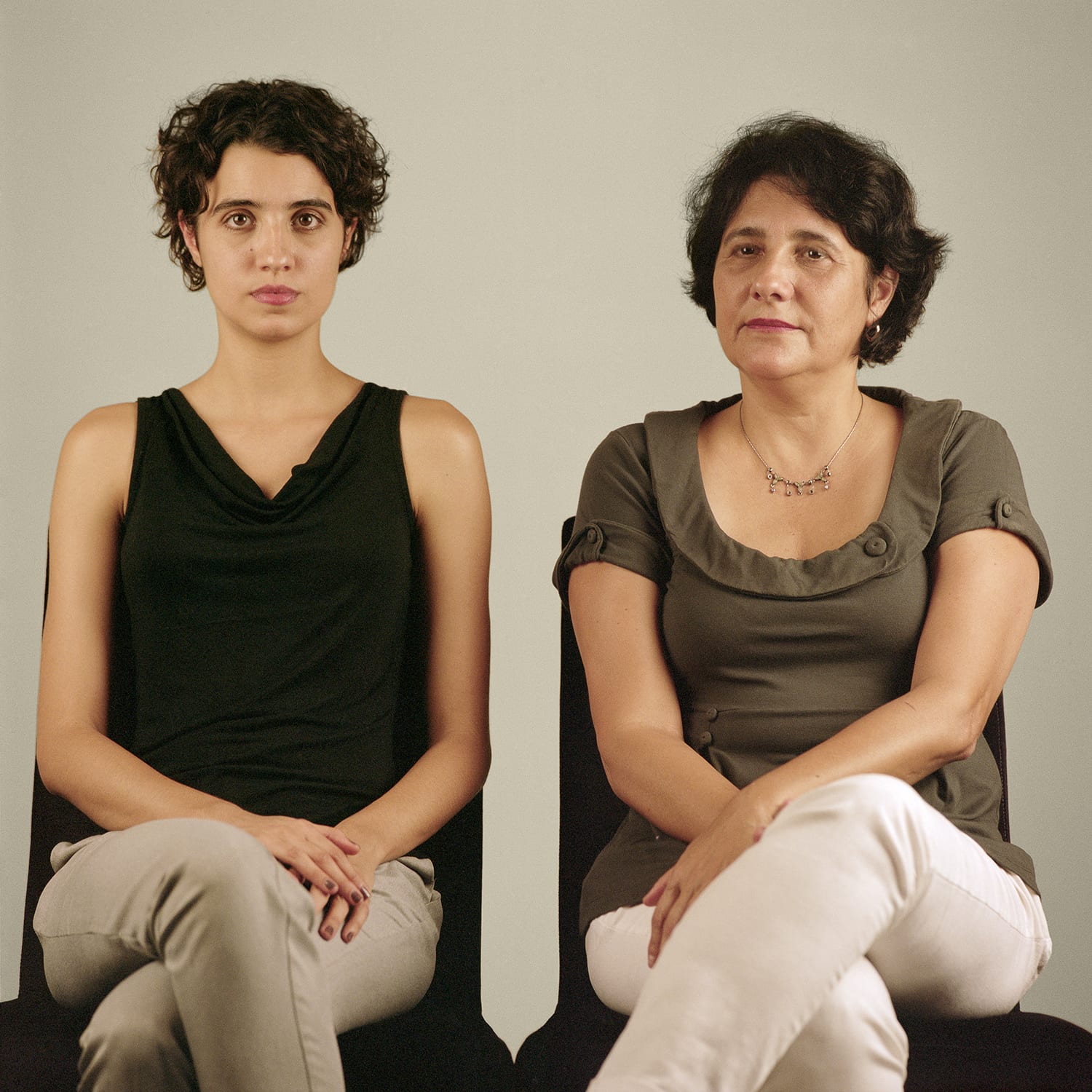
How did the idea for this work come about?
The idea emerged from my own experience as a mother. I had my first daughter while living in Rio de Janeiro, far from Belo Horizonte, where my mom lives. But when my daughter turned 3, I returned to Belo Horizonte and felt deeply moved by the evolution of the feelings that arose. I identified much more with my mother. But at the same time, as a mother, this relationship became somewhat more disturbing due to the interactions between my mother, my daughter, and me.
At that time, I was also in psychoanalysis, delving deeply into the complexities of the unconscious and how our subjectivity is formed. As a woman, I arrived at Lacan’s concept of “Devastación.” Alongside this, I’ve always had a strong interest in the practice of portraiture, which has been an essential part of my artistic production. I find that photography, in general, but especially portraiture, is very powerful in creating relationships and experiences.
I also had a very intense personal experience with the mirror. Having the habit of looking at myself in it, I realized that silence in front of the mirror facilitates deep processes. This led me back to Lacan, who precisely speaks about how female subjectivity is formed through the daughter’s desire to separate from the mother, which conflicts with the need for identification. This process is also greatly influenced by a dimension of the unspeakable, which cannot be expressed, although it is very sensitive.
So, the idea for the project started to emerge from these three elements: my experience with my mother and my daughter, my experience in analysis, and my experience with portraits. I saw this as an opportunity to create a profoundly enriching meeting between mothers and daughters and provide a unique experience, an encounter in which they could interact uniquely, away from the daily hustle. In everyday life, we are always influenced by many gestures, words, and distractions that divert our attention from real contact with others. So, the idea of remaining in silence, almost in a meditative experience, is a proposal to connect with this affectivity while keeping what is happening in silence.
I imagined this for a while and did a first test with a friend who agreed to participate. She even wrote one of the texts for the book, in which she tells her own experience in the first person. It worked because it was also a mystery: what would happen? Based on this first experience, I understood something special was happening between them.
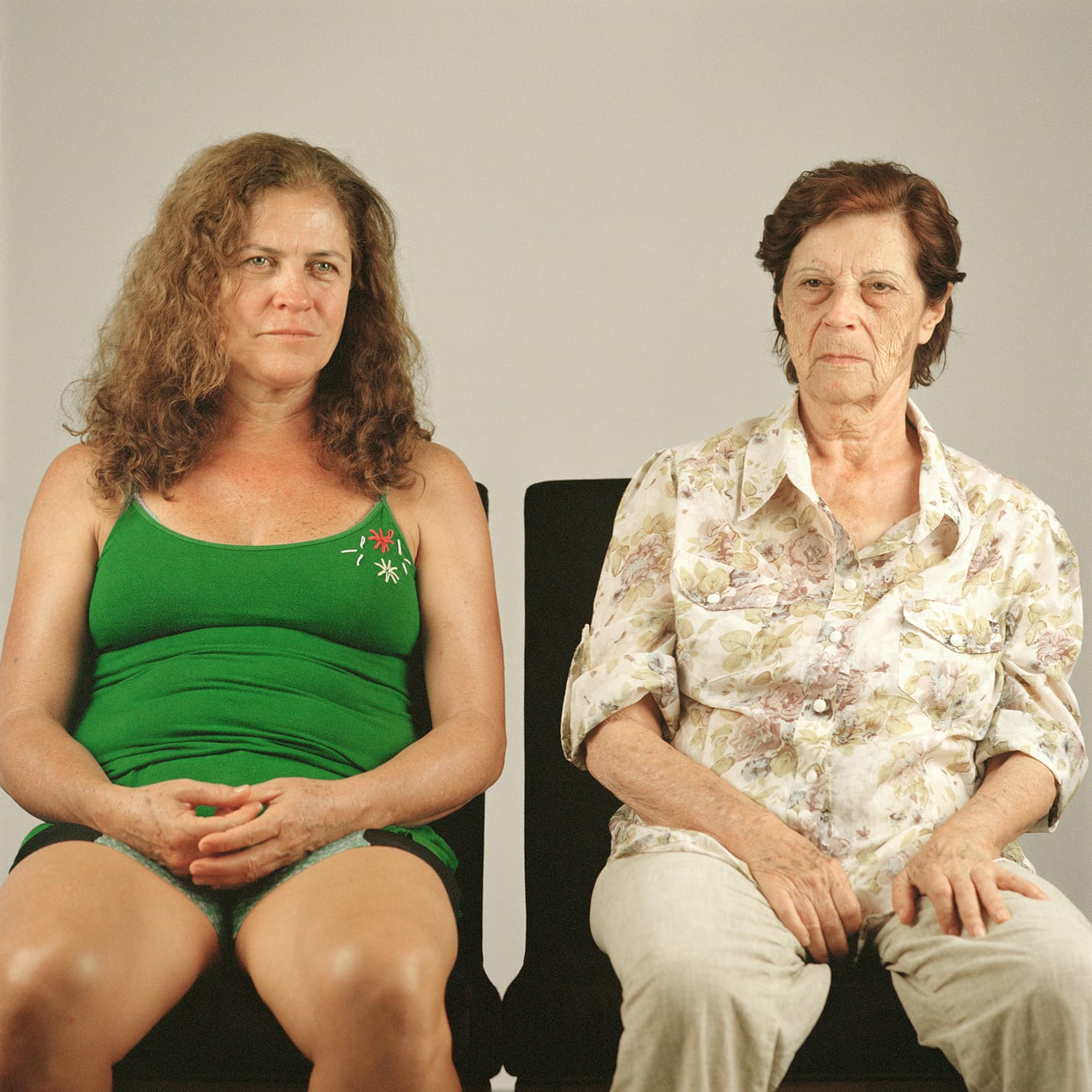
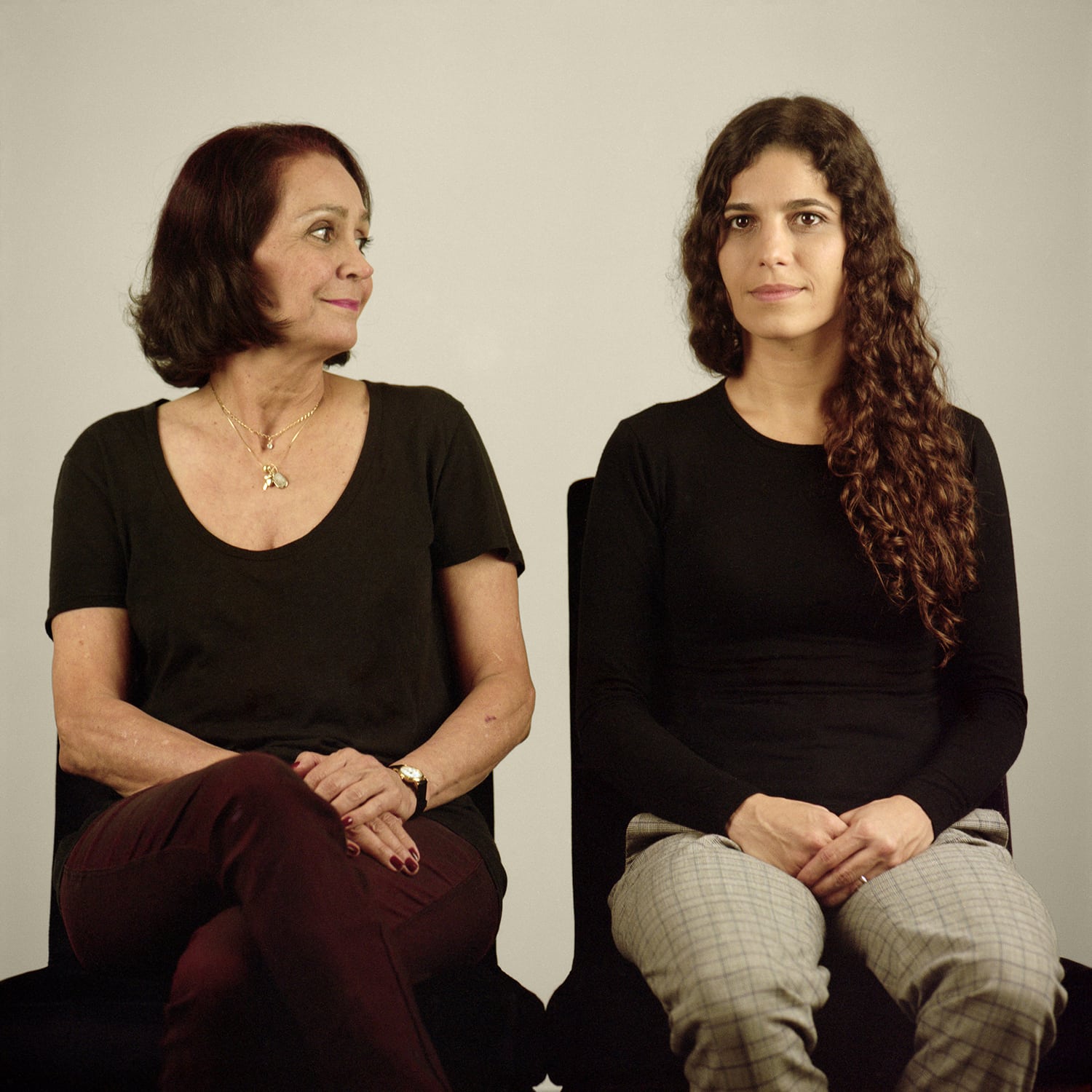
For these portraits, you placed the camera behind a mirror. How did this change things from the moment when mothers and daughters were looking at themselves in the mirror and not directly at the camera?
The mirror between the camera and their gazes made them look at each other. They knew I was there but didn’t have direct contact with the camera. The primary and essential contact for the work was for one to look at the other. That creates a duality in the experience because a mirror is something in which we look at ourselves to see who we are and to recognize ourselves through it. But in this case, they were looking at themselves and each other, creating an estrangement. It’s odd to look in the mirror and find another person besides yourself. The mirror also has a psychoanalytic connotation related to how a child’s individuality is formed as they distinguish themselves from their mother, recognizing their body as distinct from their mother’s.
It’s almost like a game of not recognizing themselves as a body separate from the mother, being together again. Together but apart. Confusing bodies, subjectivities, memories, histories, creativities, traumas, and bonds created situations in which everything was in turmoil.
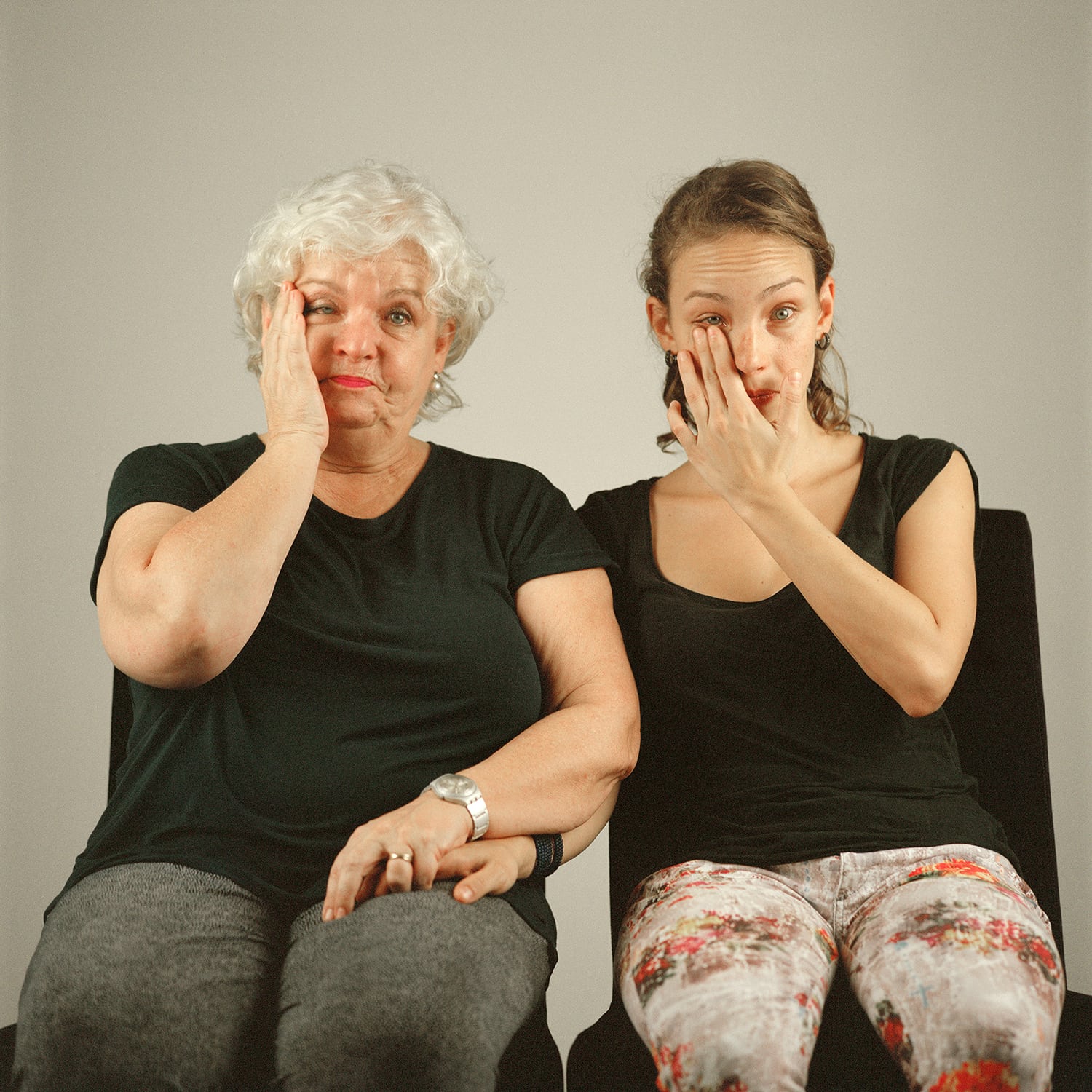
You mentioned that the idea for this project arose from concerns related to your relationship with your mother. Did this work allow you to understand that relationship better?
Indeed, the idea emerged from the difficulties in my relationship with my mother. But then I realized that these difficulties were not exclusively mine; they are widely experienced in the relationships between mothers and daughters. So, of course, I was curious to see if what I was experiencing was happening elsewhere. But more than that, the idea was to provoke a feeling of estrangement or recognition in the relationship.
I need to reflect on what photography can generate beyond the image. The image is the result of something that is happening. I contemplate what this image can convey and express about what people are experiencing. It remains quite open, but in this case, there were two fundamental aspects: their experience, which relates to my own experience.
“Devastación” dates back to 2014. Have you since continued to develop the insights into motherhood that led you to undertake this project?
Indeed, I have. My most recent work, titled “Retrato de la artista como madre,” is also related to the concept of “Devastación.” I had a second daughter in 2018, and with the pandemic and everything that was happening at that time, my dedication to motherhood became more intense. Then, I began to discover some photos on my cell phone that my three-year-old daughter, Maya, had taken of me at home. As you know, a cell phone’s camera can be unlocked without a password. She started taking photos of me while I was doing everyday tasks like cooking, doing laundry, or simply resting in bed, exhausted. Finding these photos taken by my daughter was like a return of my gaze to hers.
I was struck by seeing those images and realizing how deeply I was immersed in that maternal life. “Retrato de la artista como madre” is about the photos she took of me, and I think it connects with the concept of “Devastación” in terms of the power of the gaze and what it can provoke when we see how another person sees us. In both cases, the relationships between mothers and daughters are about what kind of identification, recognition, and self-encounter they can experience. Seeing an image of oneself sets many things in motion. In “Devastación,” they were facing themselves, and now I was facing an image where I was no longer the author but the subject being portrayed.